National parks offer the best spots for watching wildlife in their natural habitats. These parks are home to a vast array of animals, from soaring birds to creeping insects. Every park provides a unique window into the lives of different species.
Whether you’re looking to watch bison roam vast prairies or see turtles nest on sandy beaches, there’s a park that offers these experiences.
In this blog, we’ll guide you through the top ten US national parks for wildlife watching.
You’ll learn where to go, what you can see, and how to watch these animals safely. By visiting these parks, you engage with nature in a direct, respectful manner, enhancing your understanding of wildlife.
Keep reading to find out which parks are the best for watching wildlife and why each one is worth a visit. Join us as we explore the wonders of national parks wildlife watching.
1. Bryce Canyon National Park, Utah

Bryce Canyon isn’t actually a canyon but a collection of giant natural amphitheaters. It’s known for its distinctive geological structures called “hoodoos.”
These spire-shaped rock formations are formed by frost weathering and stream erosion of the river and lake bed sedimentary rocks.
The park covers 35,835 acres and sits at a high elevation, with the rim varying from 8,000 to 9,000 feet.
Wildlife And Natural Features
Bryce Canyon is home to over 200 species of birds, dozens of mammals, and more than a thousand plant species. This diversity is thanks to the park’s varied ecosystems, from forests to meadows.
Notable residents include the Utah prairie dog, the mountain lion, and various species of bats.
The park’s clear, dark skies make it an excellent spot for stargazing, adding another layer to its natural appeal.
Historical Significance
Human history in Bryce Canyon dates back more than 10,000 years, with Native Americans such as the Paiute people having lived in the area for centuries.
The park was named after Ebenezer Bryce, a Mormon settler who homesteaded in the area in the 1870s.
It was designated as a national park in 1928, attracting visitors from all over the world fascinated by its unique landscape and rich history.
2. Mammoth Cave National Park, Kentucky
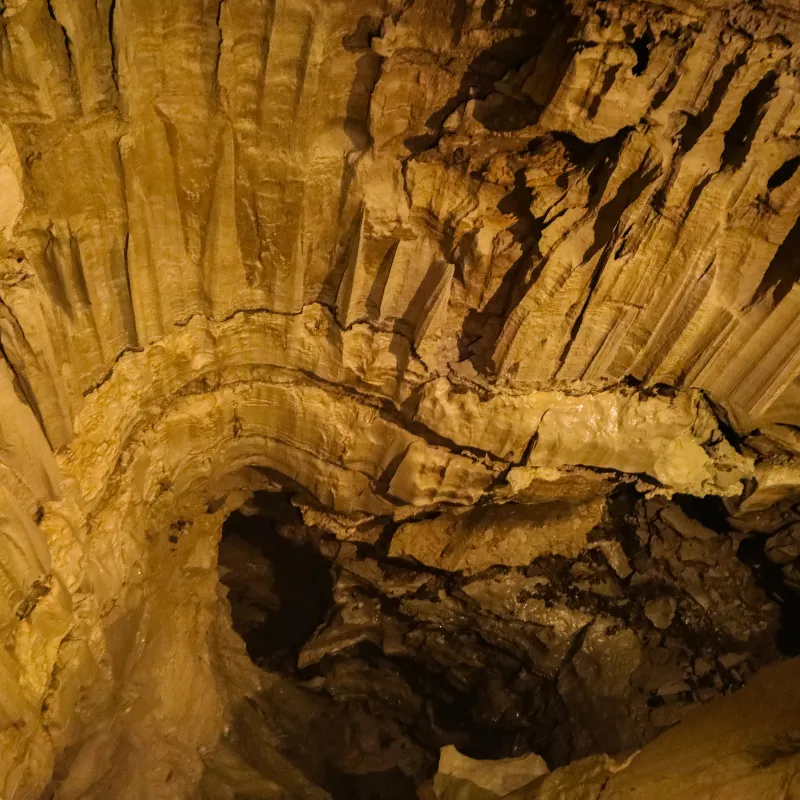
Mammoth Cave National Park houses the longest cave system known in the world, with more than 400 miles explored and mapped.
This vast network of limestone caverns is renowned for its intricate passageways, large chambers, and complex labyrinths.
The caves were formed over millions of years as water eroded the rock, creating this extensive underground marvel.
Biological Diversity
Despite its dark, enclosed environment, Mammoth Cave supports a variety of life forms adapted to subterranean life.
These include the eyeless cave fish, which has evolved without sight in the pitch-black caves, and the Kentucky cave shrimp, a threatened species.
The cave also hosts several species of bats, which play a crucial role in the ecosystem by controlling insect populations.
Historical And Cultural Aspects
The history of Mammoth Cave is rich and multifaceted, involving ancient Native American explorers, European settlers, and enslaved African Americans who played pivotal roles in early cave tours and mapping.
The cave was mined for saltpeter during the War of 1812, and it was officially established as a national park in 1941.
The park not only preserves the natural cave system but also the rich cultural heritage associated with its exploration and exploitation.
3. Acadia National Park, Maine
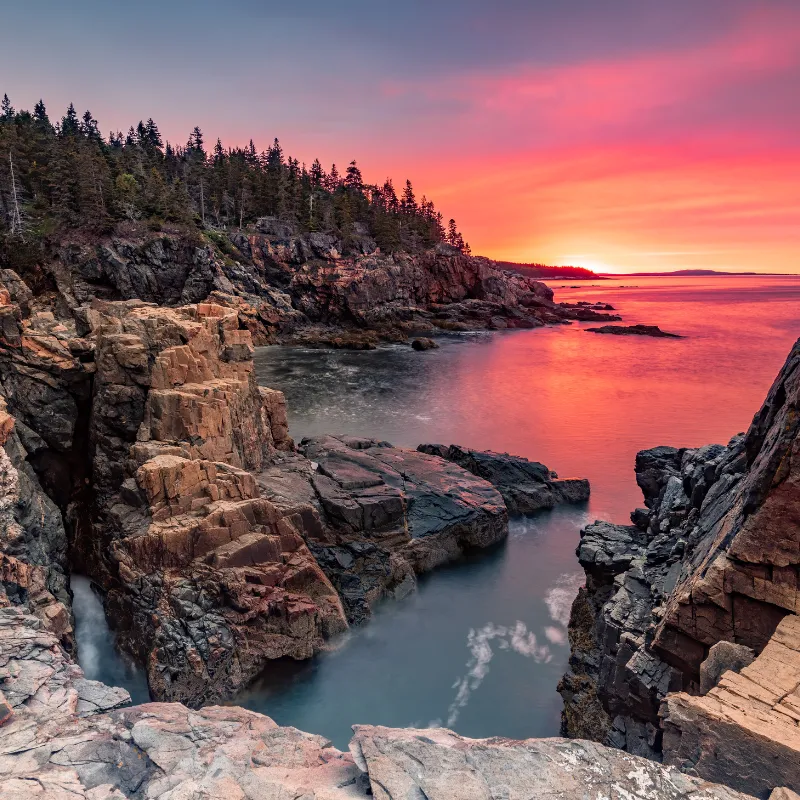
Acadia National Park, located primarily on Mount Desert Island, is a jewel of the Atlantic coast.
It encompasses more than 47,000 acres of stunning landscapes, including rocky beaches, dense woodlands, and granite peaks like Cadillac Mountain—the highest point along the North Atlantic seaboard.
The park’s varied environments support a diverse range of wildlife and plant species.
Wildlife Highlights
Acadia is a haven for birdwatchers, with over 330 bird species recorded. The park’s coastal location makes it a critical stopover for migratory birds.
Marine life also thrives here; visitors might spot seals, porpoises, and occasionally whales off the coast.
On land, the dense forests are home to mammals such as black bears, moose, and the elusive lynx.
Historical Ties
The area’s history includes its early inhabitants, the Wabanaki people, who have utilized the island’s resources for thousands of years.
Acadia became a national park in 1916, largely due to the efforts of visionaries like George B. Dorr and John D. Rockefeller Jr., who helped acquire land and develop the park’s infrastructure, including its distinctive carriage roads and stone bridges.
This blend of natural beauty and historical significance makes Acadia a fascinating destination for visitors interested in both nature and history.
4. Wind Cave National Park, South Dakota

Wind Cave is one of the oldest national parks in the U.S., renowned for its complex and highly decorated cave system.
It features the world’s densest concentration of rare boxwork formations—thin calcite fins resembling honeycombs.
Above ground, the park’s mixed-grass prairie and ponderosa pine forests span over 28,000 acres, providing a stark contrast to the hidden underground wonders.
Wildlife Abundance
The surface of Wind Cave National Park is as lively as its underground is mysterious. It is home to one of the most intact prairies in the United States, where bison, elk, and pronghorns roam freely.
The park also played a crucial role in the recovery of the black-footed ferret, one of North America’s most endangered mammals.
Bird enthusiasts can spot the golden eagle and the prairie falcon soaring above.
Conservation Efforts And History
Established in 1903, Wind Cave National Park has a long history of conservation. The park was among the first to reintegrate bison from the New York Bronx Zoo to restore the species to its native habitat.
Its extensive prairie ecosystem supports efforts for species recovery and environmental preservation, demonstrating a successful balance between tourism and conservation.
5. Dry Tortugas National Park, Florida

Dry Tortugas National Park is a remote park located 70 miles west of Key West. It encompasses seven small islands and is predominantly water.
The park is renowned for its crystal clear waters, vibrant coral reefs, and historic Fort Jefferson, one of the largest forts ever built.
It’s accessible only by boat or seaplane, offering a truly secluded escape.
Diverse Aquatic Life
This park is a paradise for snorkelers and divers, thanks to its extensive coral reefs and marine biodiversity. Home to nearly 300 species of birds, fish, and coral, it provides some of the most stunning underwater experiences.
Visitors might see loggerhead and green sea turtles, a variety of tropical fish, and even nurse sharks.
The park’s protected waters also serve as an important breeding ground for the threatened sea turtles.
Historical Significance
Dry Tortugas was discovered by Spanish explorer Ponce de Leon in 1513 and named after the abundant sea turtles (tortugas in Spanish) and its lack of fresh water (dry).
Fort Jefferson, built in the 19th century and used as a prison during the Civil War, offers a glimpse into America’s past.
The fort and the surrounding waters are not only a beacon for history enthusiasts but also play a crucial role in maritime conservation.
6. Carlsbad Caverns National Park, New Mexico

Carlsbad Caverns National Park is famed for its extensive network of more than 100 limestone caves.
The largest chamber, known as the Big Room, spans over 600,000 square feet, making it one of the largest accessible cave chambers in the world.
These underground landscapes were formed from sulfuric acid dissolving limestone, creating an extraordinary variety of speleothems, or cave formations.
Rich Bat Populations
One of the park’s most spectacular natural phenomena is the nightly exodus of Brazilian free-tailed bats from the cave entrance during the summer months.
Visitors gather at dusk to watch as hundreds of thousands of bats swirl into the evening sky in search of insects.
This event is not only a fascinating spectacle but also a critical natural process for controlling insect populations in the area.
Historical And Ecological Significance
The history of Carlsbad Caverns extends back to Native American groups who knew of the caverns long before they were a national park.
European settlers discovered the caves in the 1800s, and Carlsbad Caverns was designated as a national park in 1930.
Beyond its geological and cultural history, the park serves as an important research site for geologists and biologists, who study its unique ecosystem and ancient formations.
7. Black Canyon Of The Gunnison National Park, Colorado
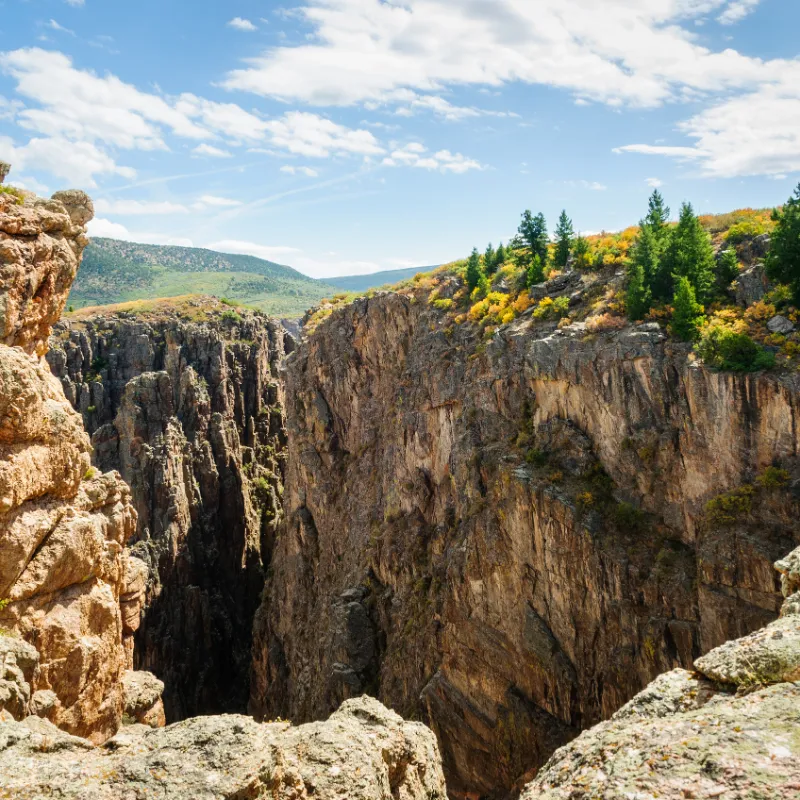
Black Canyon of the Gunnison National Park features some of the steepest cliffs, oldest rock, and craggiest spires in North America.
With depths reaching 2,722 feet and a narrow opening at the top, the canyon provides a striking display of geologic history.
The Gunnison River, which flows through the canyon, has played a key role in carving this deep and narrow gorge over millions of years.
Wildlife And Flora
The unique topography of the Black Canyon creates diverse habitats, supporting a variety of wildlife.
Mule deer, elk, and the elusive black bear roam the rim, while the inner canyon is home to bighorn sheep and river otters.
Peregrine falcons, golden eagles, and other raptors are commonly seen soaring above the canyon, utilizing the updrafts for flight.
Historical Insights
The Ute people were the canyon’s original inhabitants, utilizing its resources for centuries before European settlers arrived.
The park’s name, “Black Canyon,” was inspired by the fact that some parts of the gorge receive only 33 minutes of sunlight a day due to its depth and narrowness.
Designated as a national park in 1999, it is one of the younger national parks in the United States but is significant for its dramatic landscapes and ecological diversity.
8. Pinnacles National Park, California
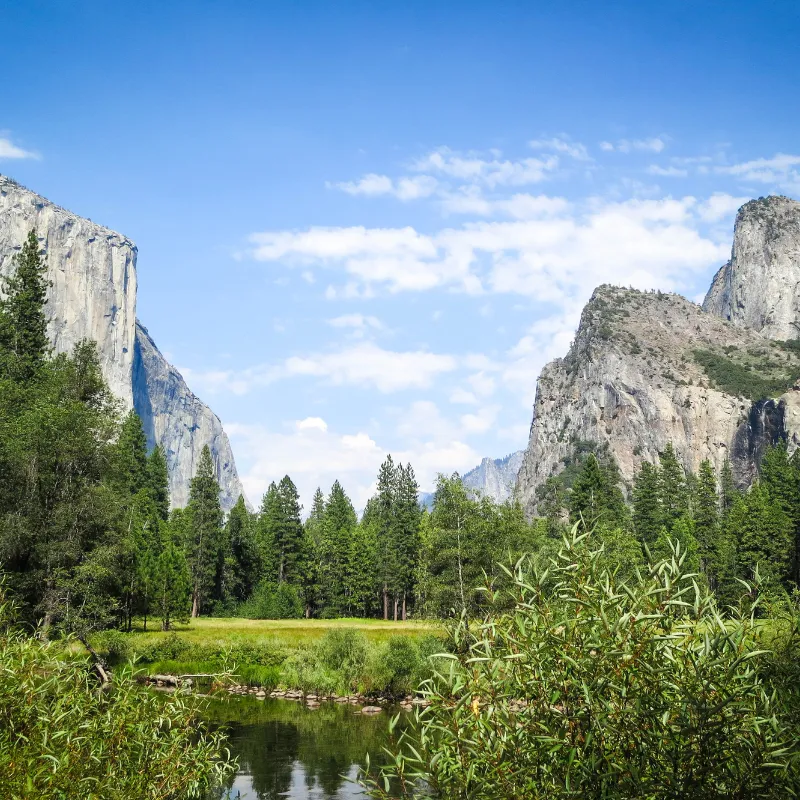
Pinnacles National Park, formed by the eruption of multiple volcanoes over 23 million years ago, showcases a landscape of dramatic rock formations and talus caves.
The park is divided into East and West regions by rock formations, creating distinct environments.
These ancient volcanic remnants are not only a geological spectacle but also provide critical habitats for various species.
Haven For Endangered Species
Pinnacles is a crucial site for the recovery and study of the California condor, one of the world’s rarest birds.
The park participates actively in the condor recovery program, which aims to save this endangered species from extinction.
Visitors might spot these majestic birds soaring overhead or perched atop the rocky crags.
The park also supports a high density of prairie falcons and is home to multiple species of bats that roost in its caves.
Historical Context
Established as a national monument by President Theodore Roosevelt in 1908 and redesignated as a national park in 2013, Pinnacles has a long history of preservation and public enjoyment.
The park’s unique geological features have attracted scientists and nature lovers for over a century. Its network of hiking trails and rock climbing routes make it a popular destination for outdoor enthusiasts.
9. Cuyahoga Valley National Park, Ohio
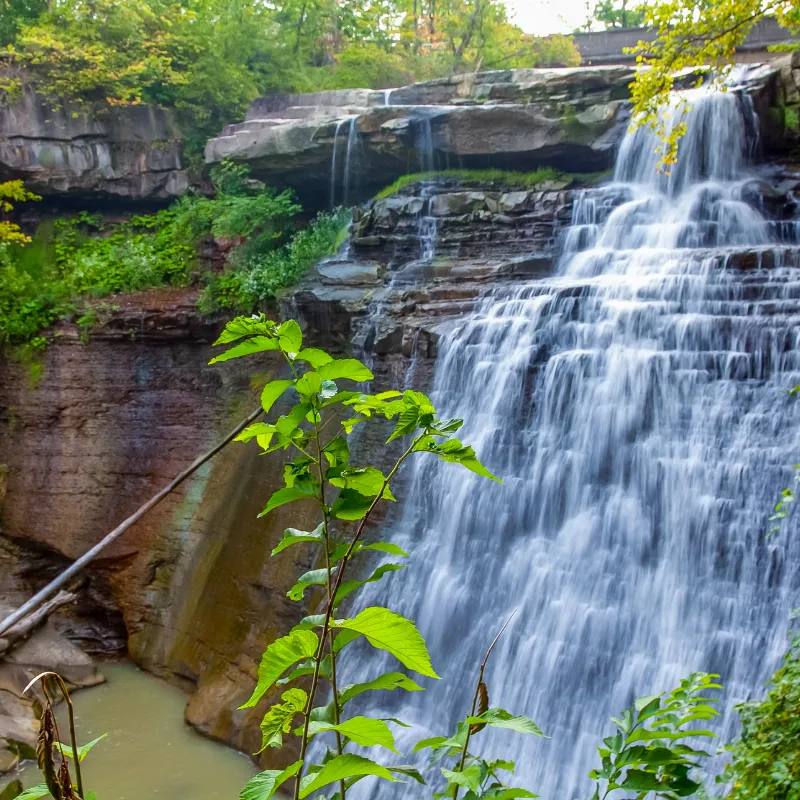
Nestled between the urban areas of Cleveland and Akron, Cuyahoga Valley National Park offers a surprising retreat into nature. The park encompasses over 33,000 acres along the Cuyahoga River.
Its landscape features rolling hills, dense forests, and wetlands, all of which support diverse wildlife populations.
It’s a prime example of nature’s resilience, showcasing how natural areas can thrive close to urban centers.
Wildlife Watching Hotspots
Cuyahoga Valley is known for its vibrant bird life, with over 200 bird species documented.
The Beaver Marsh is a must-visit for birdwatchers and photographers, home to waterfowl, herons, and occasionally, bald eagles.
The wetlands also provide habitat for mammals like beavers, otters, and muskrats. Migratory birds enhance the park’s biodiversity, especially during spring and fall migrations.
Historical Significance
The history of Cuyahoga Valley includes its transformation from farmland to a recreation area and its designation as a national park in 1974.
The Ohio & Erie Canal, which runs through the park, is a piece of 19th-century engineering that played a crucial role in the economic development of the Ohio River Valley.
Today, visitors can hike or bike along the Towpath Trail that follows the old canal routes, adding a historical layer to their nature exploration.
10. Congaree National Park, South Carolina
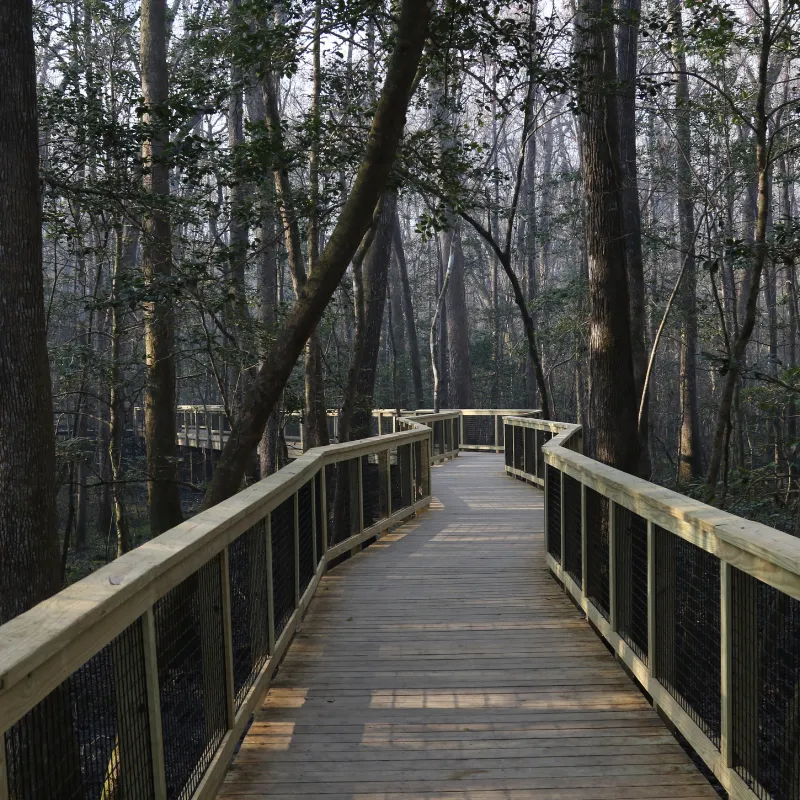
Congaree National Park is home to some of the tallest trees in the eastern United States and preserves the largest tract of old growth bottomland hardwood forest in the country.
The park’s 26,276 acres are a critical sanctuary for biodiversity, hosting an array of fungi, plants, and animals.
The varied ecosystems of the park, from floodplains to swamps, support a complex web of life.
Prime Wildlife Viewing
Congaree is famous for its synchronous fireflies, which light up the forest with their coordinated flashing patterns during certain times of the year, usually in May. This natural phenomenon attracts visitors from all over the world.
The park’s waterways, such as Cedar Creek, provide excellent opportunities for canoeing and kayaking, where you might spot river otters, barred owls, and even alligators sunning on the banks.
Historical And Ecological Importance
The park’s land has a rich history, from its use by Native Americans for hunting and fishing to its logging history in the early 20th century.
Congaree National Park was designated in 2003, making it one of the newer additions to the U.S. National Park System.
Its establishment marked a significant conservation achievement, preserving this unique environment for future generations.
Final Thoughts
We’ve toured ten incredible national parks, each offering unique wildlife watching experiences. From the deep caves of Kentucky to the vibrant coral reefs of Florida, these parks showcase the rich biodiversity of the United States.
Whether you’re observing the flight of bats at sunset or watching seals along the coast, each park provides a unique window into the natural world.
Remember to respect these natural habitats and keep a safe distance to ensure that wildlife remains undisturbed.
Exploring these national parks not only reconnects us with nature but also underscores the importance of conservation. Enjoy your National Parks Wildlife Watching!

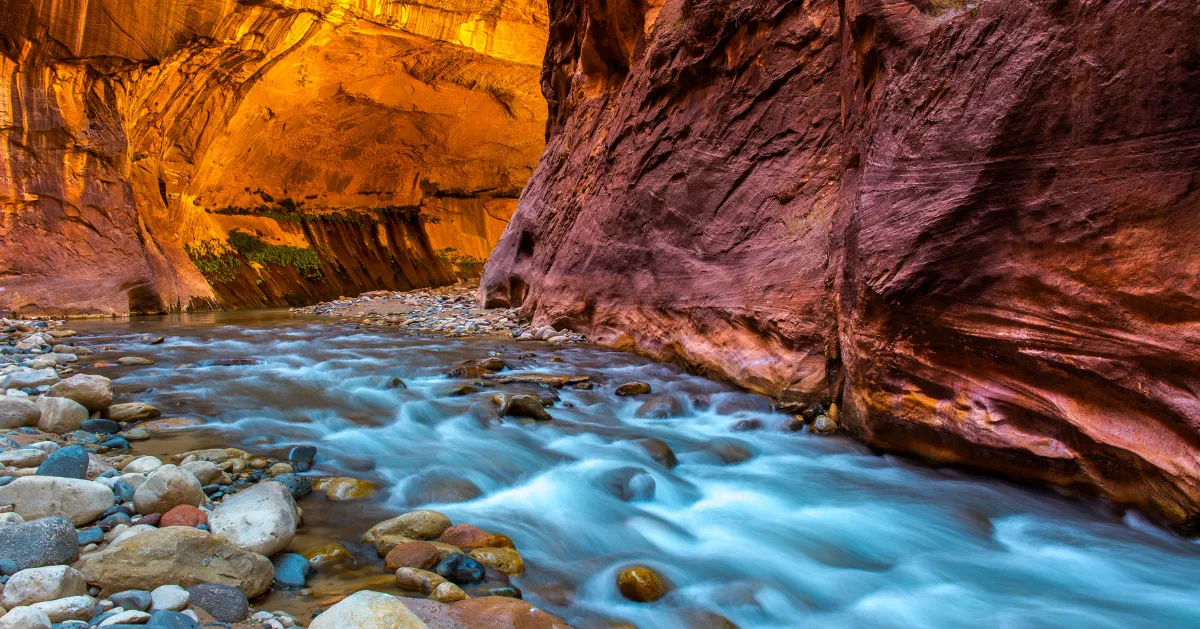

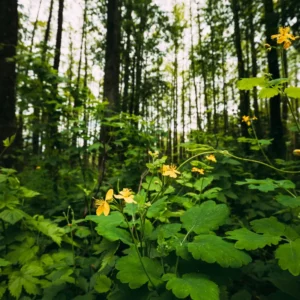




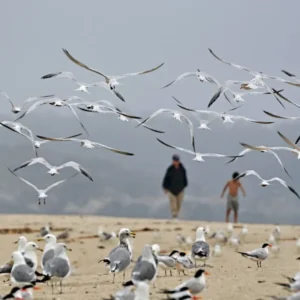
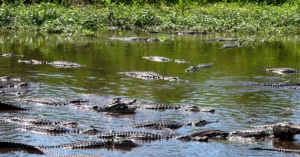
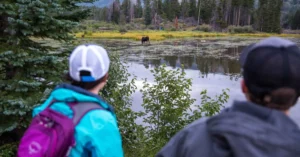
3 thoughts on “Top 10 National Parks For Wildlife Watching In The USA”
Loved the section on Acadia National Park, Maine. Always dreamt of visiting Maine for its natural beauty, and your article just pushed it to the top of my list, Julia. Thanks for the nudge!
Acadia’s great, but go off-season to avoid the crowds. Fall’s amazing with the foliage.
Absolutely, @MapleHiker. Plus, supporting the park in the off-season is a great way to ensure places like Acadia remain beautiful and accessible for everyone.